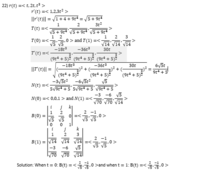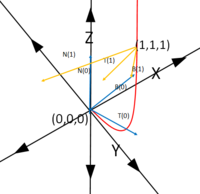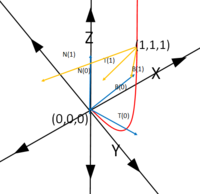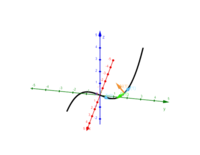I keep getting the same answer for these cross products. Does that make sense?
[MATH]B(1)=\left|\begin{matrix}i&j&k\\\frac{1}{\sqrt{14}}&\frac{2}{\sqrt{14}}&\frac{3}{\sqrt{14}}\\\frac{-3}{\sqrt{70}}&\frac{-6}{\sqrt{70}}&\frac{\sqrt5}{\sqrt{14}}\\\end{matrix}\right|=<\frac{2}{\sqrt5},\frac{-1}{\sqrt5},0>[/MATH] and [MATH]B(0)=\left|\begin{matrix}i&j&k\\\frac{1}{\sqrt5}&\frac{2}{\sqrt5}&0\\0&0&1\\\end{matrix}\right|=<\frac{2}{\sqrt5},\frac{-1}{\sqrt5},0>[/MATH]
[MATH]B(1)=\left|\begin{matrix}i&j&k\\\frac{1}{\sqrt{14}}&\frac{2}{\sqrt{14}}&\frac{3}{\sqrt{14}}\\\frac{-3}{\sqrt{70}}&\frac{-6}{\sqrt{70}}&\frac{\sqrt5}{\sqrt{14}}\\\end{matrix}\right|=<\frac{2}{\sqrt5},\frac{-1}{\sqrt5},0>[/MATH] and [MATH]B(0)=\left|\begin{matrix}i&j&k\\\frac{1}{\sqrt5}&\frac{2}{\sqrt5}&0\\0&0&1\\\end{matrix}\right|=<\frac{2}{\sqrt5},\frac{-1}{\sqrt5},0>[/MATH]




